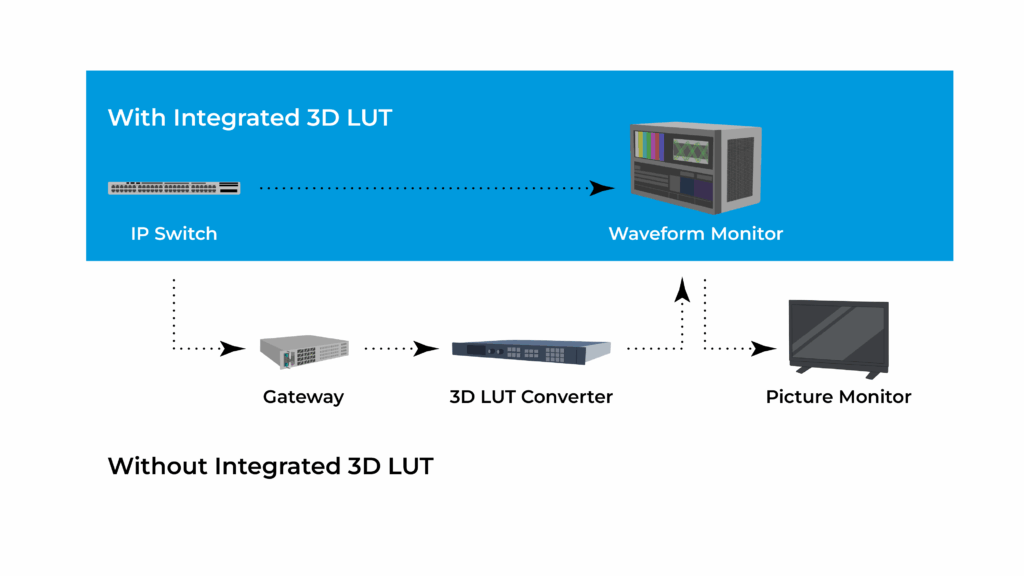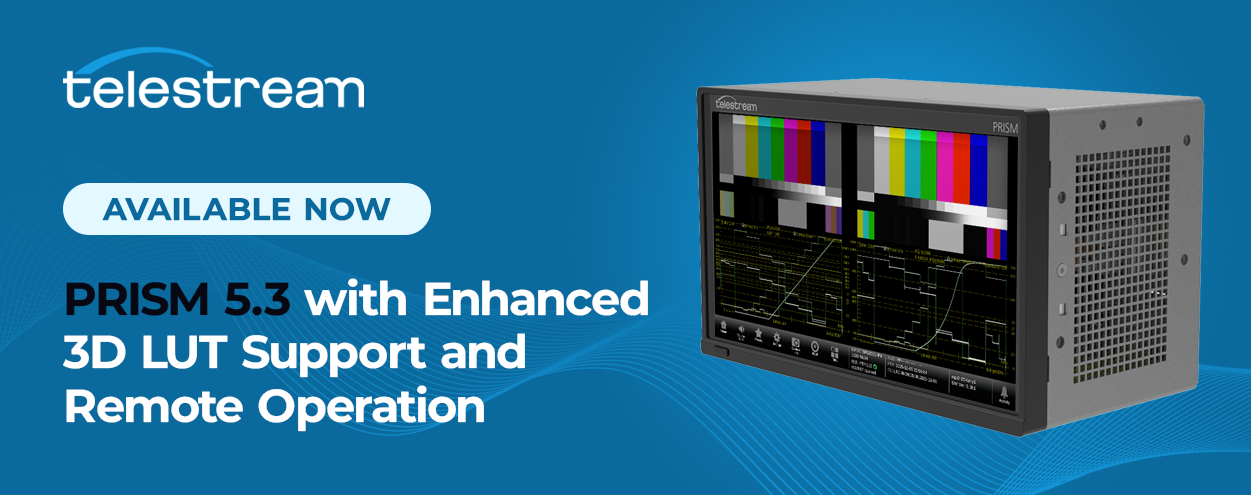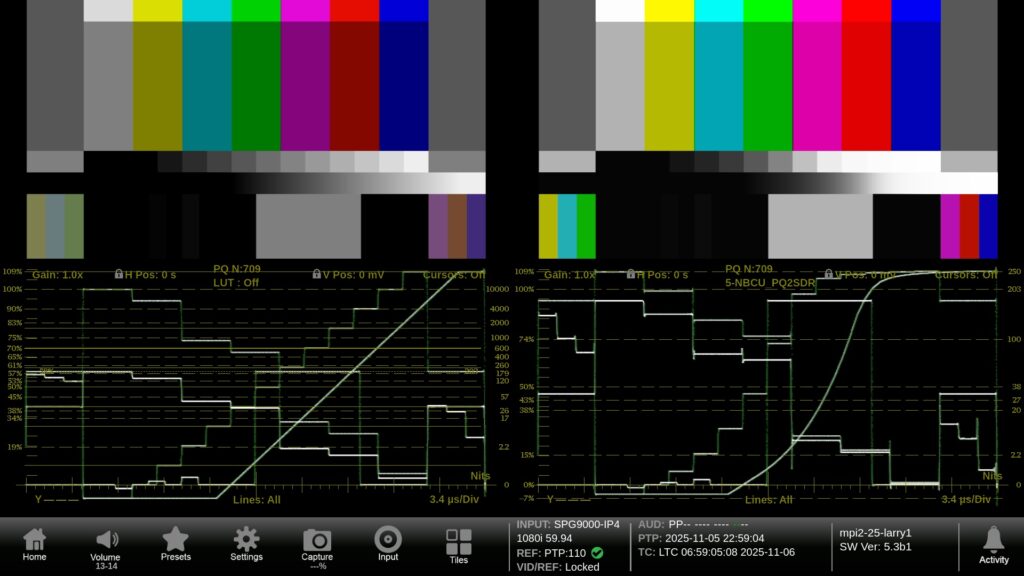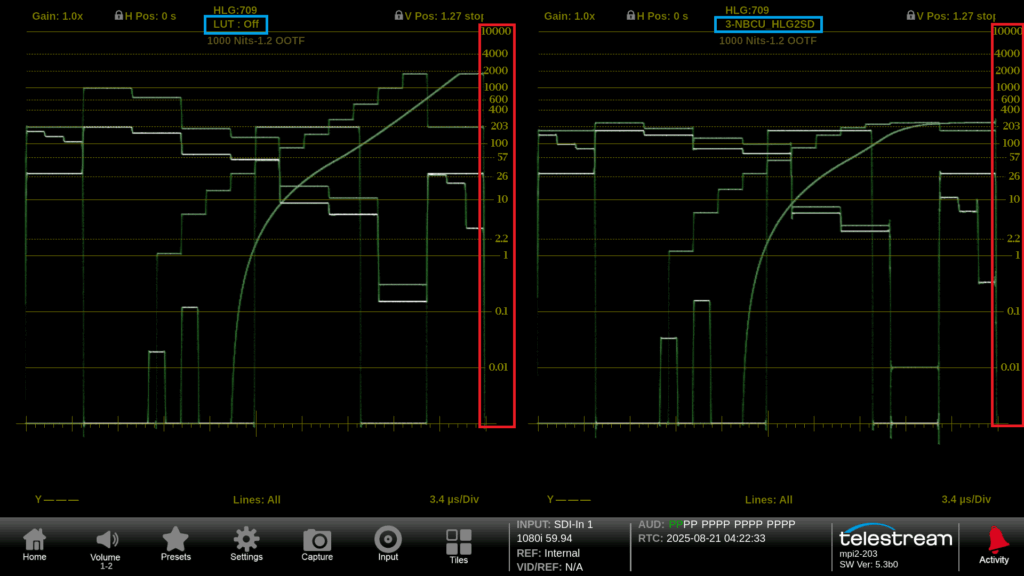Technical directors are tasked with ensuring a consistent visual appearance between HDR and SDR feeds. To achieve this, they rely on waveform monitors and picture monitors to compare HDR / SDR feeds side by side for visual and objective comparison.
However, comparing these HDR and SDR signal feeds presents a few challenges. First, HDR and SDR signals have different gammas. For example, when users compare 100% white (203nits) brightness between the two feeds, the waveform traces appear at different vertical positions, making direct visual comparison challenging and requiring extra interpretation. In addition, monitoring both HDR and SDR feeds typically requires multiple picture monitors, external 3D LUT boxes, and physical controls to toggle between LUTs at the technical director’s position, resulting in a more complex system and workflow setup.
PRISM 5.3 Simplifies HDR / SDR Monitoring in Live Broadcasts
As a follow-up to the recent blog post, Enhancing HDR/SDR Live Broadcasting with New PRISM 3D LUT Technology, we discuss in this new blog post how PRISM version 5.3 introduces powerful new tools to address these monitoring challenges.
The challenge of cumbersome waveform interpretation in HDR / SDR signal comparison comes from different vertical scales in waveform application. PRISM offers Stop display to present the signals in different gammas with a consistent normalized “linear to light” logarithm vertical scale, allowing users to compare the brightness of the signals immediately helping them to make quick decisions. The integration of 3D LUT conversion within the STOP display application, helping to streamline the HDR/SDR broadcast workflow for technical directors.
Waveform vs Stop Display
Waveform: Because of the different vertical scales, comparing the HDR (left) and SDR (right) signals is difficult.
Stop: Because the vertical scales are the same, it’s easy to compare the HDR (left) and SDR (right) signals.
In addition, 3D LUT conversion is now supported on AUX SDI Output in HD and UHD formats with VPID information corresponding to the selected 3D LUT coefficients. Users can easily compare HDR/SDR images on a reference picture monitor by toggling the 3D LUT feature on the PRISM user interface, import their own LUTs, and save preferred configurations as presets for quick and easy recall. Monitoring systems can now adopt a simple daisy chain wiring scheme. In IP systems, a single IP cable from the IP Switch can support multiple monitoring equipment, further reducing system complexity.

PRISM with integrated 3D LUT consolidates four functions in one box.
For users wanting further simplified monitoring system, the new display panel being equipped with MPS and MPD models shortly will eliminate the need even for an external picture monitor. The new display panel equipped in those models has 500 nits of brightness, so that the display panel on the right side in the MPD models can be used as SDR reference monitor. Enabling 3D LUT feature for HDR to SDR conversion, now MPD models can provide waveform features on the left and picture after conversion on the right, simplifies HDR/SDR simultaneous monitoring system even further.

Picture application on the right side of MPD model with new 500 nits display panel
Simplifying Workflow and Reducing Costs
By integrating 3D LUT functionality directly into PRISM, broadcasters can streamline their production workflows, cut costs, and reduce operational complexity. The result is a monitoring system that supports simultaneous HD/SDR and UHD/HDR content with greater efficiency and flexibility, allowing broadcasters to focus on delivering exceptional live productions.
Discover how PRISM can transform your HDR/SDR production workflows. Visit our website page to learn more.
PRISM customers can download version 5.3 with 3D LUT and additional new enhancements from the PRISM resources page.



